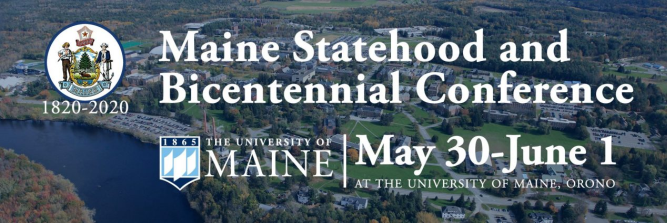Loading...
Presentation Type
Performance
Location
Minsky Recital Hall
Start Date
30-5-2019 5:30 PM
Description
A performance by musical artists Ferdinand "Dino" Liva (violin), Lydia Forbes (violin), Kirsten Monke (viola), and Myles Jordan (cello).
Program notes by Kirsten Monke provide the following background: When we learned about the notated songs of Membertou (c. early 1500s- 1611), a major shaman-chief of the Mi’kmaq nation, the idea for this program began to percolate. What diversity of music might there have been as so many different peoples explored, fished, and colonized Maine’s rocky coast and European influences began to permeate the land? Fragments of elegant china, unearthed at archaeological sites such as Fort Pemaquid, illustrate how some European newcomers insisted upon bringing a few familiar comforts of home. Music would most certainly have been such a comfort. But we have scant trace of documented music from northeastern North America in this early period, making the written record of Membertou’s songs, and one young colonial bachelor’s dance book found in Topsham, so valuable.
We know that music played a vital role in indigenous communities, that European sailors sang chanteys to accompany their work, and that all communities blessed their watercraft with traditional music. Noblemen and naval captains, when in port, would likely have heard if not danced to the latest music of their time played in the grand houses of Europe. French Jesuit missionaries brought with them their musical liturgy and passed it on to new generations of Catholics. Publications of the latest English dance tunes sold like hotcakes when they arrived in Boston in the 18th century. The violin (or fiddle) was the most prevalent instrument brought from Europe, played in taverns and at country dances, and a “pochette” violin, designed to fit in one’s pocket, was not uncommon. But aside from such generalities, we can only speculate about what music might have been in the air, crossing the seas, “earworms” perhaps, of the people who lived in what we now call Maine so many generations ago. With that in mind, this program highlights certain significant events along Maine’s pre-statehood timeline (from the 16th to the 19th centuries), with selected music from that time to share some of the cultural influences of the people involved.
Crosscurrents Event Program
Crosscurrents: The DaPonte String Quartet Explores the Mixed Musics of Early Maine
Minsky Recital Hall
A performance by musical artists Ferdinand "Dino" Liva (violin), Lydia Forbes (violin), Kirsten Monke (viola), and Myles Jordan (cello).
Program notes by Kirsten Monke provide the following background: When we learned about the notated songs of Membertou (c. early 1500s- 1611), a major shaman-chief of the Mi’kmaq nation, the idea for this program began to percolate. What diversity of music might there have been as so many different peoples explored, fished, and colonized Maine’s rocky coast and European influences began to permeate the land? Fragments of elegant china, unearthed at archaeological sites such as Fort Pemaquid, illustrate how some European newcomers insisted upon bringing a few familiar comforts of home. Music would most certainly have been such a comfort. But we have scant trace of documented music from northeastern North America in this early period, making the written record of Membertou’s songs, and one young colonial bachelor’s dance book found in Topsham, so valuable.
We know that music played a vital role in indigenous communities, that European sailors sang chanteys to accompany their work, and that all communities blessed their watercraft with traditional music. Noblemen and naval captains, when in port, would likely have heard if not danced to the latest music of their time played in the grand houses of Europe. French Jesuit missionaries brought with them their musical liturgy and passed it on to new generations of Catholics. Publications of the latest English dance tunes sold like hotcakes when they arrived in Boston in the 18th century. The violin (or fiddle) was the most prevalent instrument brought from Europe, played in taverns and at country dances, and a “pochette” violin, designed to fit in one’s pocket, was not uncommon. But aside from such generalities, we can only speculate about what music might have been in the air, crossing the seas, “earworms” perhaps, of the people who lived in what we now call Maine so many generations ago. With that in mind, this program highlights certain significant events along Maine’s pre-statehood timeline (from the 16th to the 19th centuries), with selected music from that time to share some of the cultural influences of the people involved.


